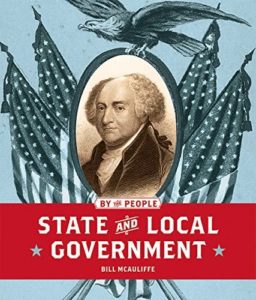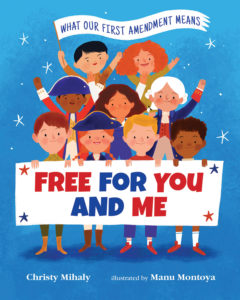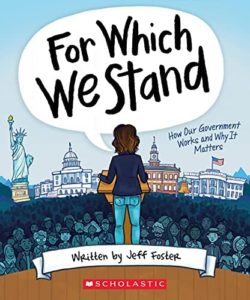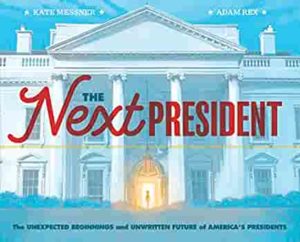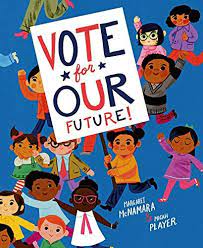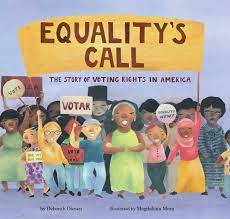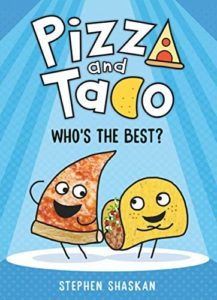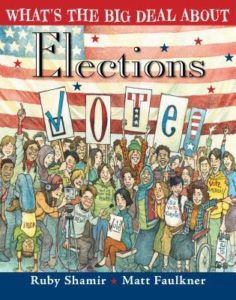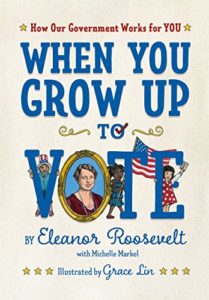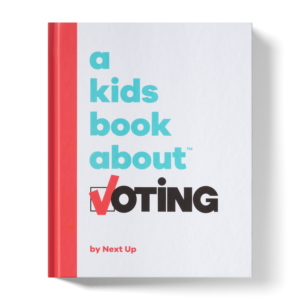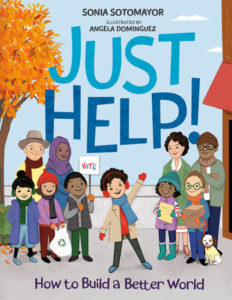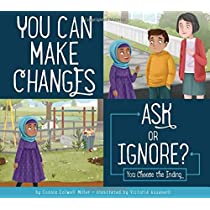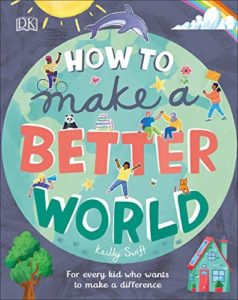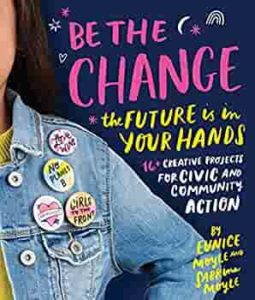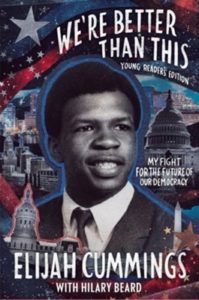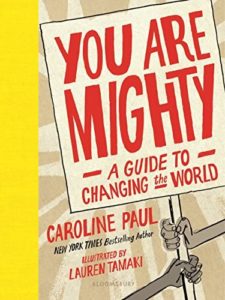More and more families are having open conversations about big issues, including politics. We most often associate politics with big moments in history, things like presidential elections. But when you boil it down, politics is how people in groups make decisions at many different levels. Here are some ideas of how to introduce these concepts of politics, voting, and what it means to be a citizen to your kid.
What is voting? For the last presidential election, PBS kids did a whole series of You Choose videos to highlight the importance of using your voice to make change. This video is a great introduction to what it means to vote.
 What option is best? Debate is one of the best tools to share your point of view, encourage change, and invite people to consider different opinions. The podcast Smash, Boom, Best does an amazing job of modeling debate with important match ups to find out which is best, like Tacos vs. Pizza or Libraries vs. Museums (we know the right answer to that one!). Once you get the hang of it, your family can host your own debate. Who will argue for what side? What are your reasons for or against the topic?
What option is best? Debate is one of the best tools to share your point of view, encourage change, and invite people to consider different opinions. The podcast Smash, Boom, Best does an amazing job of modeling debate with important match ups to find out which is best, like Tacos vs. Pizza or Libraries vs. Museums (we know the right answer to that one!). Once you get the hang of it, your family can host your own debate. Who will argue for what side? What are your reasons for or against the topic?
Take a look at local and state politics. Who represents you in the city? What about the state? How do they make decisions? Are they talking about issues that are important to you and your family? How could you let them know about what you are concerned about?
Have your child make a list of things that are important to them. What do they wish was different? How could it be changed?
Learn more! Check out these recommended books about voting and making a change. Learning to use our voice is an important tool in creating future voters!
What is Government?
State and Local Governments by Bill McAuliffe.
A historical survey of state and local governments, including the role and responsibilities each has in its community and influential mayors, governors, and others.
Free for You and Me: What Our First Amendment Means by Christy Mihaly.
Vivid, kid-friendly examples demonstrate the meaning of freedom of religion, speech, and the press, and the rights to assemble peacefully and to petition the government.
For Which We Stand: How Our Government Works and Why It Matters by Jeff Foster.
What is the Constitution? What are the branches of the government? What is the Electoral College? What are the political parties? What are the different responsibilities of the city, state, and federal governments?
The Next President: the Unexpected Beginnings and Unwritten Future of America’s Presidents by Kate Messner.
A quick introduction to the U. S. Presidents using a unique reference of time.
What About Voting?
Vote for Our Future by Margaret McNamara.
The students of Stanton Elementary School, which is a polling place, find out all they can about voting and then encourage everyone in their neighborhoods to cast their ballots.
Equality’s Call: the Story of Voting Rights in America by Deborah Diesen.
A powerful look at the evolution of voting rights in the United States, from our nation’s founding to the present day.
Pizza and Taco: Who’s the Best? by Stephen Shaskan
Best friends Pizza and Taco agree on nearly everything until Pizza declares himself the best of all, leading to debating, voting, competing, and finally defining what being the best really means.
What’s the Big Deal About Elections? by Ruby Shamir.
Describes how Americans choose leaders, local and federal, and why elections should matter.
When You Grow Up to Vote: How Our Government Works For You by Eleanor Roosevelt.
Beginning with government workers like firefighters and garbage collectors, and moving up through local government to the national stage, this book explains that the people in government work for the voter.
A Kid’s Book About Voting by contributors from Next Up.
This book explains what voting is, how it works, and examines its influence through the lens of American history. It also challenges kids to wonder: why is it important? And who do you think should be able to vote?
What Is Activism?
Just Help by Sonia Sotomayor.
In a story inspired by her own family’s desire to help others, Supreme Court Justice Sonia Sotomayor takes young readers on a journey through a neighborhood where kids and adults, activists and bus drivers, friends and strangers all help one another to build a better world for themselves and their community.
You Can Make Changes: Ask or Ignore? by Connie Miller.
In this illustrated choose-your-own-ending book, Yusra must choose between asking for help rebuilding her neighborhood park or ignoring the problem. Readers make choices for Yusra and read what happens next, with each story path leading to different consequences.
How to Make a Better World by Kate Messner.
A quick introduction to the U. S. Presidents using a unique reference of time.
Be the Change: the Future Is In Your Hands by Eunice Moyle.
First learn how to get inspired and how to inspire others, as well as the importance of embracing diverse perspectives and how to handle conflict diplomatically. Then discover how to channel your inspiration into creative outlets, such as organizing community events or meetings, using social media to affect change, and contacting your government representatives.
We’re Better Than This: My Fight For the Future of Our Democracy by Elijah Cummings.
Young readers will learn not only that we must be and do better than our oppressors but that it is our shared responsibility as a nation to keep our democracy intact because it is the only way to pursue freedom, justice, and equality for all.
You Are Mighty: A Guide to Changing the World by Caroline Paul.
This guide features change-maker tips, tons of DIY activities, and stories about the kids who have paved the way before, from famous activists like Malala Yousafzai and Claudette Colvin to the everyday young people whose habit changes triggered huge ripple effects.
